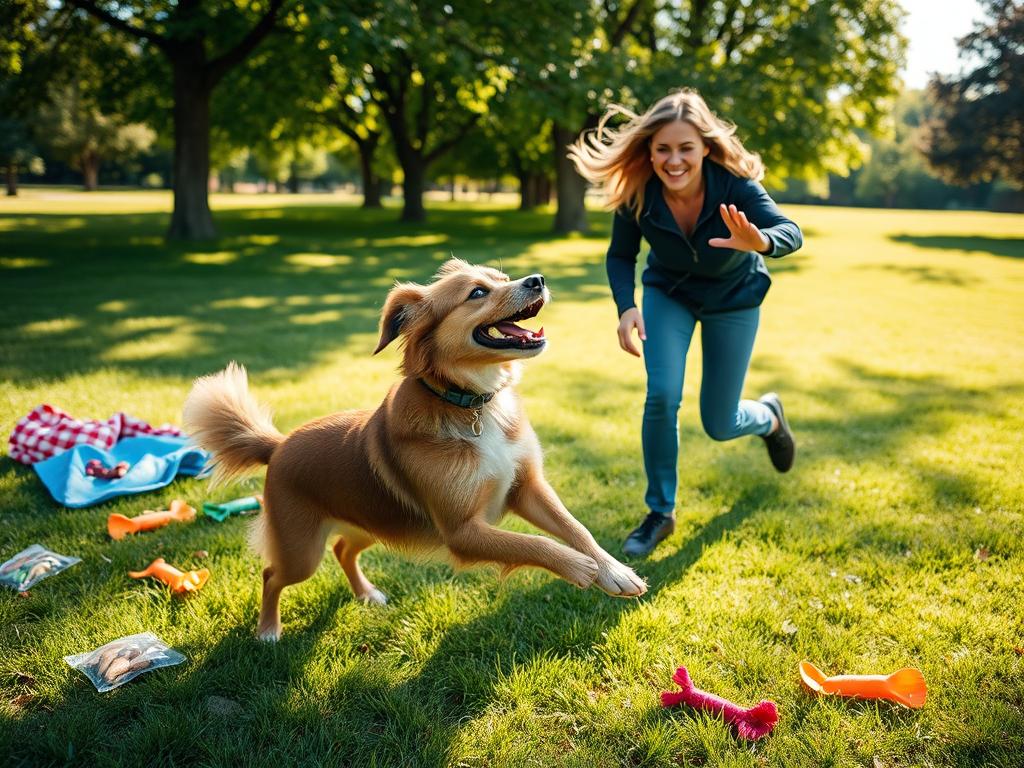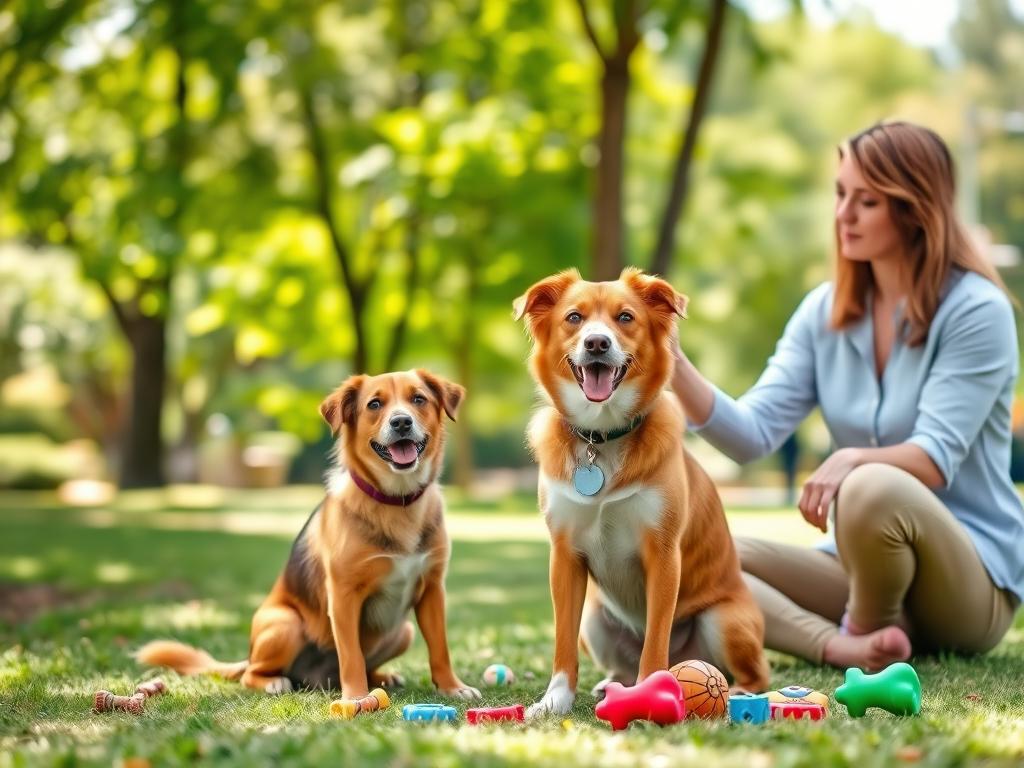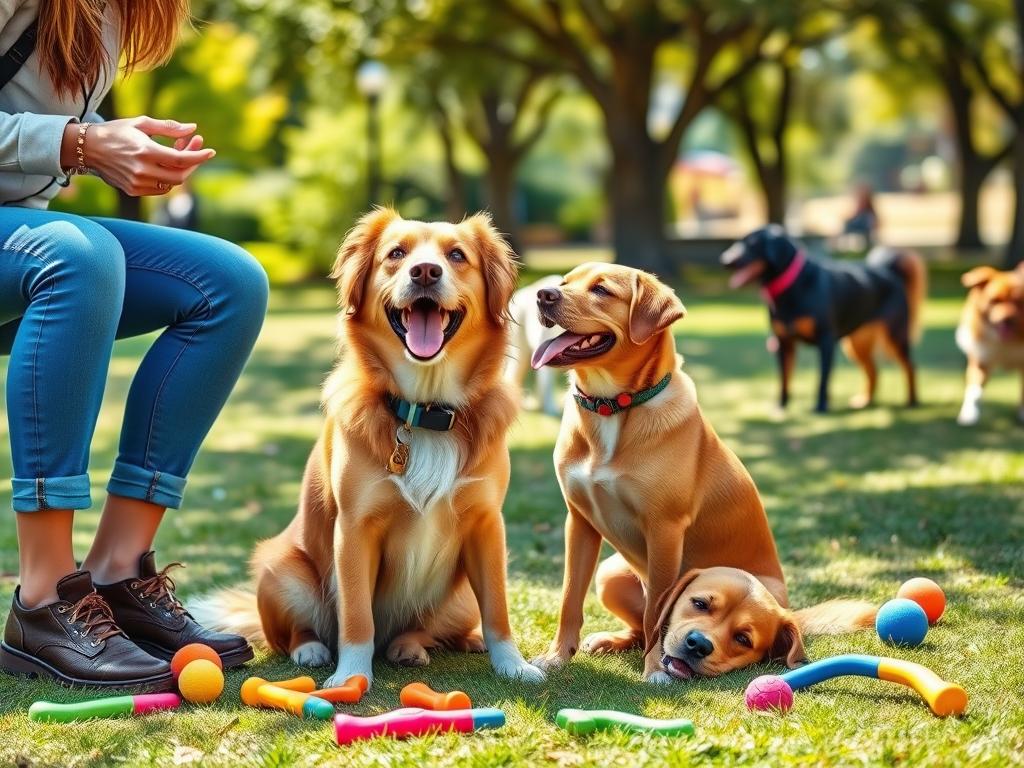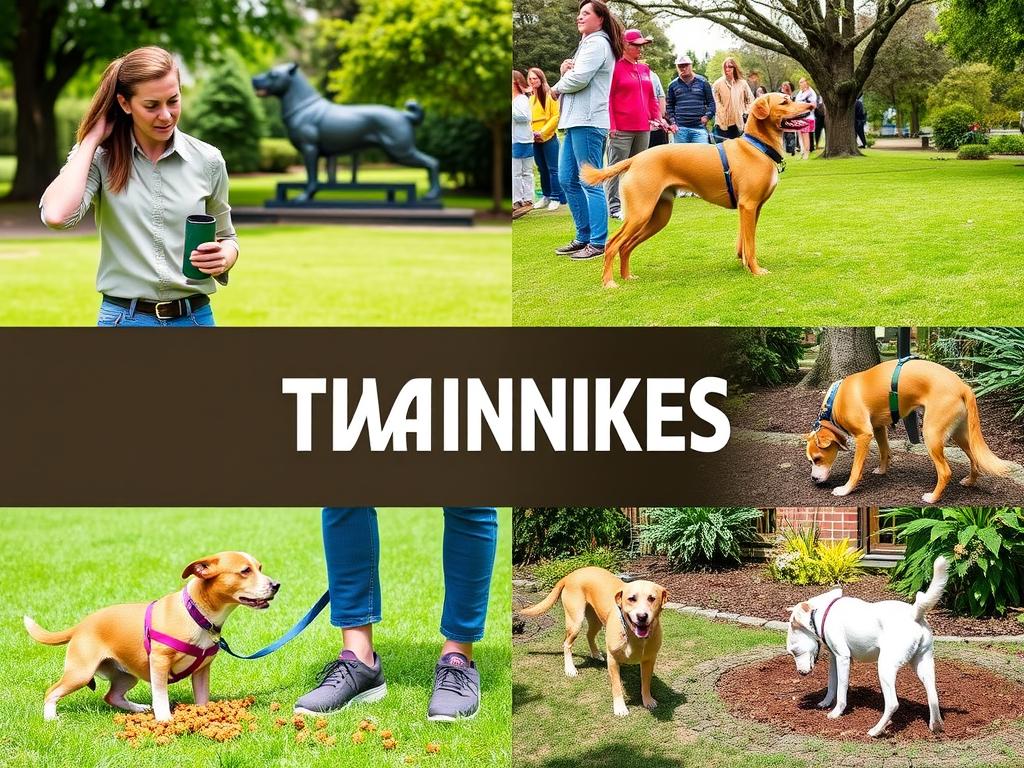Did you know that positive reinforcement training is considered the most effective method of dog training by nearly all veterinarians? This method not only strengthens the bond between you and your furry friend but also accelerates the learning process. Teaching your dog obedience quickly can set the foundation for a well-behaved adult dog and enhance both their quality of life and your relationship.
The American Kennel Club suggests keeping training sessions to a maximum of five minutes for optimal effectiveness, emphasizing that short but frequent sessions yield better results than longer ones. In this guide, we will explore the Top 7 Ways to Teach Your Dog Obedience Quickly, share valuable dog training tips, and discuss effective dog training methods that you can implement right away.
Key Takeaways
- Positive reinforcement is the preferred training method among veterinarians.
- Short, repeated training sessions lead to better learning outcomes.
- Consistency in training routines is vital for effective dog training.
- Engaging a professional trainer can significantly speed up the training process.
- Start with foundational commands for a smoother training journey.
Start with Basic Commands to get Dog Obedience
Beginning with basic commands is crucial for laying the foundation of any effective dog training program. These commands, such as “sit,” “stay,” and “come,” are not only important for the dog’s safety but they also strengthen the bond between the dog and the owner. By initiating training early, owners can instill behaviors that will benefit their dogs throughout their lives. Following the best practices for dog training ensures that these fundamental skills are properly taught and reinforced.
Importance of Basic Commands
Learning basic commands is essential for teaching dog obedience fast. These commands provide structure and guidance for your dog, helping them understand their place in the household. Early training establishes clear expectations, making it easier for the dog to follow rules. This proactive approach keeps dogs safe and fosters mutual respect between pet and owner.
Recommended First Commands
When starting training, focus on commands that are not only practical but also enjoyable for the dog. Recommended commands include:
- Sit
- Stay
- Come
- Leave It
- Down
- Heel
- Place
These commands form the core elements of obedience training, and adding fun tricks can keep the training sessions engaging. Consider incorporating exercises like fetching or rolling over to motivate your dog.
Tips for Consistent Practice
Consistency is key in all training efforts. Short, frequent training sessions are more effective than long, sporadic ones. Aim for regular practice at least several times a week, around 5 to 10 minutes per session. This approach not only enhances learning but makes training feel less like a chore. Incorporating play and positive reinforcement helps create a welcoming environment for your dog, reinforcing their desire to learn.

To further explore commands and essential techniques, consider looking into key resources on training methods. Understanding the importance of each command will help optimize your training strategy and improve outcomes for you and your dog.
Use Positive Reinforcement Techniques
Positive reinforcement is a cornerstone of effective dog training. This method rewards desirable behaviors, making it immensely beneficial in promoting good manners and obedience. Utilizing obedience training techniques based on positive reinforcement leads to lasting behavioral changes and fosters a trusting relationship between you and your dog.
Benefits of Rewarding Good Behavior
Rewarding good behavior offers numerous advantages. Dogs become more motivated to follow commands when they receive positive feedback. This approach not only establishes clear expectations but also enhances your bond, as your dog learns to associate good behavior with enjoyable outcomes. According to recent findings, nearly all veterinarians endorse positive reinforcement as the most effective training method.
Types of Rewards to Use
When it comes to rewards, it’s essential to choose options that resonate with your dog. Rewards can include:
- Treats that your dog loves
- Praise with an enthusiastic tone
- Playtime with favorite toys
- A chance to explore new environments
These rewards will vary depending on your dog’s preferences, reinforcing the importance of understanding your pet’s unique motivations, which are crucial for rapid dog obedience training.
Timing Your Rewards for Best Results
Proper timing significantly amplifies the effectiveness of positive reinforcement. Dogs need immediate feedback to connect their actions with the rewards. Deliver rewards swiftly following a good behavior, establishing a clear link. Incorporating consistent cues, both verbal and non-verbal, ensures your dog grasps expectations and responds appropriately. As you practice, remember that patience and repeated short sessions can yield better results than lengthy training marathons.

For detailed guidance on teaching your dog to behave around guests, refer to this resource. Understanding and implementing positive reinforcement techniques will transform training into an enjoyable experience.
Create a Structured Training Schedule
A well-organized training schedule plays a vital role in the effective education of your dog. By establishing a routine, you help your furry friend understand when to expect training sessions, which enhances their focus and retention of commands. To train your dog efficiently, it is essential to maintain a clear and consistent schedule.
Setting a Training Routine
Creating a training routine begins with selecting specific times during the day that work best for both you and your dog. Puppies can learn basic commands in 6-8 weeks with consistent training. For adult dogs, the timeframe may extend to 8-12 weeks due to established habits. Aim for daily sessions with a duration of 5-10 minutes, 2-3 times a day, which is a great way to reinforce commands with quick obedience training tips.
Duration and Frequency of Sessions
To keep your dog engaged, keep sessions short but frequent. Introducing training early, around 8 weeks of age for puppies, prevents the emergence of undesirable behaviors. You can use a structured approach, gradually increasing the complexity of commands as your dog becomes more skilled. This ensures that training remains stimulating and enjoyable.
Adjusting the Schedule as Needed
As your dog matures, flexibility in adjusting the training schedule is crucial. Observe your dog’s responses and willingness to learn, and modify the routine accordingly. If your dog struggles with a particular command, a professional trainer could provide valuable guidance in creating a structured training schedule aligned with specific goals. You can read more about setting a successful framework for dog training here.

| Dog Age | Learning Duration | Recommended Session Length |
|---|---|---|
| Puppies | 6-8 weeks for basic commands | 5-10 minutes, 2-3 times daily |
| Adult Dogs | 8-12 weeks for basic obedience | 5-10 minutes, 2-3 times daily |
Socialize Your Dog with Other Pets
Socialization is a crucial element in developing a well-adjusted dog. Properly socialized dogs tend to be happier and more relaxed in various environments. Gradual introductions to different dogs and people help them adapt and reduce anxiety in new situations. The ideal timeframe for socializing dogs lies between seven weeks and four months, which is when they are most receptive to new experiences. It’s important to recognize that some dogs may miss this window and require socialization later in adulthood.
Importance of Socialization
Socialization significantly impacts a dog’s ability to interact with others. Dogs that have not been properly socialized may struggle with body language and fear or aggression around other animals. Adult dogs often display more hesitation in adapting to new experiences compared to puppies, which can lead to increased anxiety during walks or gatherings. Engaging in socialization during a puppy’s critical period of 3 to 16 weeks fosters confident behaviors and aids in speed up dog obedience learning.
Safe Ways to Introduce New Animals
When introducing your dog to new animals, safe and effective methods are essential. Start with controlled environments using familiar pets for initial interactions. Utilize high-value treats or favorite toys to create positive associations during these introductions. As the dog responds to new experiences positively, gradually expose them to different environments, like dog parks or training classes. Remember to halt any rough play immediately, as signs of aggression can escalate quickly. Understanding dog body language is key to ensuring the introduction goes smoothly.
Monitoring Interactions for Success
Close monitoring of interactions is vital to ensuring your pet feels comfortable and secure. Watch for signs of stress or discomfort, such as backing away or excessive barking. Allow your dog some downtime to recharge, which can be crucial during socialization efforts. Effective dog training methods involve establishing consistent rules and goals that facilitate a positive social experience. Engaging with professional trainers can provide expert guidance, further enhancing your dog’s social skills and overall well-being.
Be Patient and Consistent
Training your dog can be a rewarding yet challenging experience. It’s essential to understand that every dog has its unique learning pace, and patience is key to fostering a successful training environment. Navigating through various dog training tips can help you adapt your methods to fit your dog’s individual needs, ensuring that they remain engaged and confident. Remember, the goal is to create a nurturing atmosphere that encourages learning while minimizing frustration.
Understanding Your Dog’s Learning Pace
Every dog absorbs information differently; some may grasp commands quickly, while others might take longer to understand them. Common mistakes include expressing unrealistic expectations about how fast your canine companion should learn and introducing inconsistencies in commands. Maintaining a calm demeanor during training sessions allows your dog to feel secure, which is integral to their confidence. Patience and understanding are crucial for effectively using obedience training techniques.
Common Mistakes to Avoid
One major pitfall is failing to maintain consistent terminology and cues throughout training processes. Miscommunication can lead to confusion, ultimately slowing down progress. Immediate interruption of any misbehavior is essential to avoid turning temporary actions into permanent habits. Ensuring that your dog comprehends what is expected creates a solid foundation for obedience training.
Techniques for Staying Consistent
To make training effective, establish a routine that includes regular sessions—keeping them short but frequent is advisable for maintaining your dog’s focus. Incorporate engaging activities, and adjust your training strategy based on your dog’s mood and responses. By facilitating a consistent approach within a positive framework, you cultivate an environment where learning can thrive. Remember, establishing a reliable routine not only promotes effective learning but also strengthens the bond between you and your furry friend.











